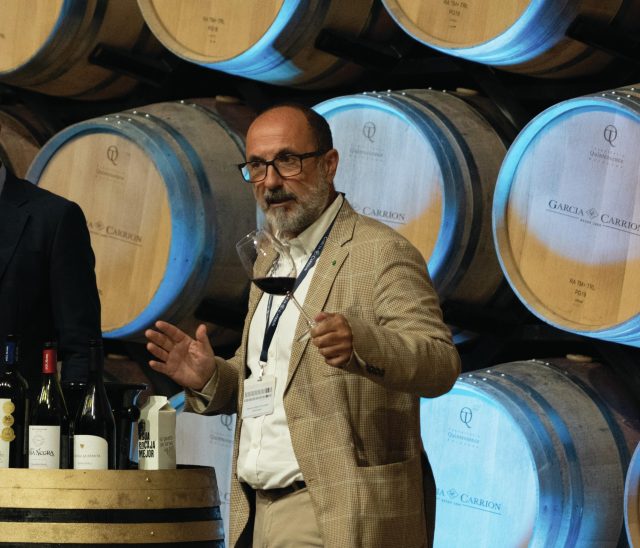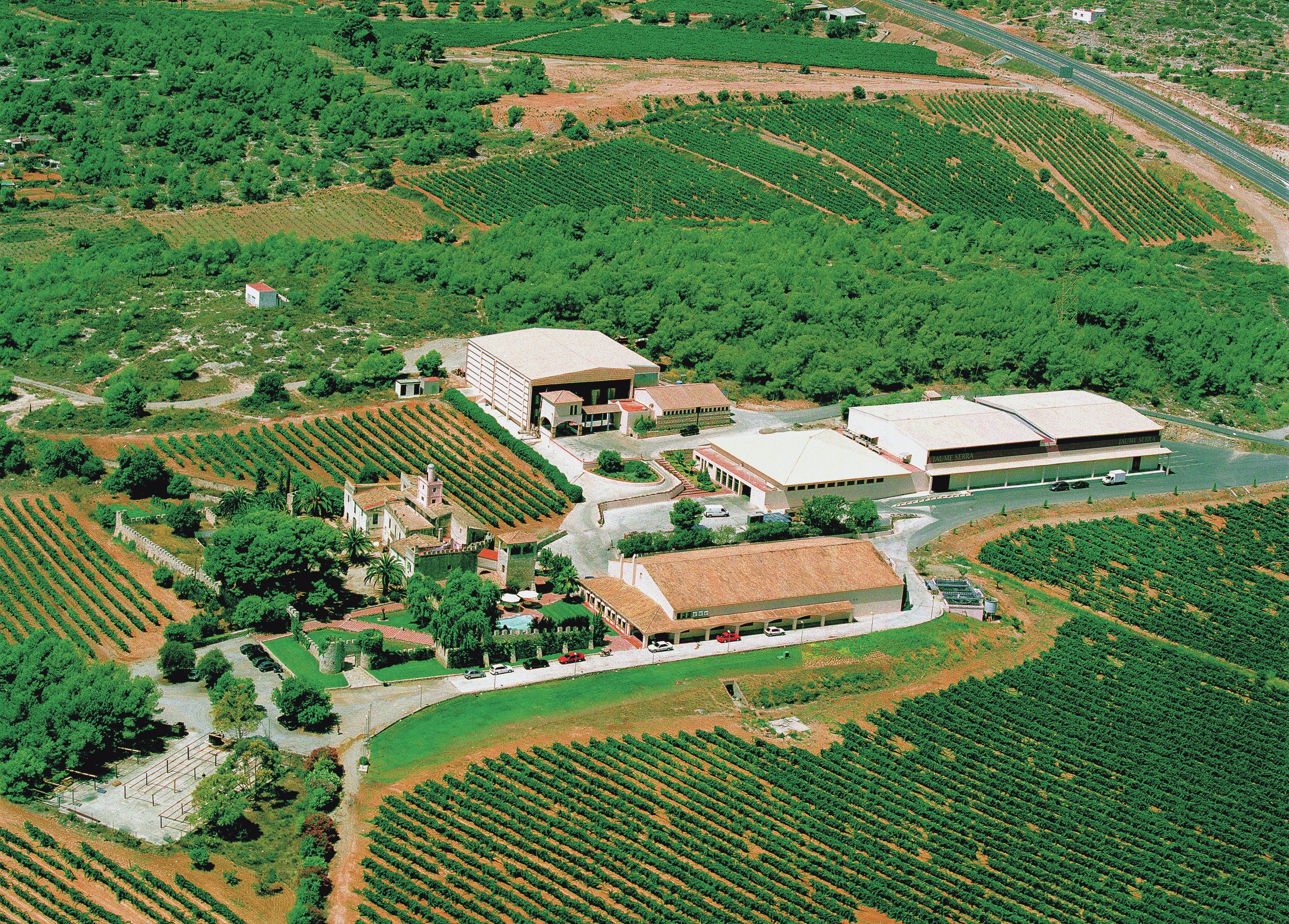The Big Interview: J García Carrión’s Toni González
As Spain’s wine industry confronts climate change, few are as well-placed as J García Carrión’s Toni González to discuss potential solutions. Gabriel Stone reports.

There are times when it’s useful to have 33 harvests under your belt. Ask any winemaker and they’ll confirm that no two years are ever quite the same in this business, but 2023 certainly wasn’t the vintage to be a rookie oenologist in Southern Europe, let alone in Spain.
As director of oenology for J García Carrión, a company that claims to be the largest wine producer in Europe and fourth-largest in the world, Toni González needed to draw on all his considerable experience to get through a very testing year. But 33 vintages don’t just bring expertise; they’re also a vital source of perspective.
“I remember challenging harvests like 1995 or 1997, when there was a serious drought in Spain too,” González recalls. Indeed, he adds: “Those harvests were more challenging at the time, because I had less experience.”
By contrast, despite the gloomy headlines – the International Organisation of Vine and Wine (OIV) anticipates that Spain’s 2023 harvest will be a hefty 19% down on the country’s five-year average – González remains strikingly sanguine.
“It’s been OK this year,” he remarks. “Our wineries these days have better equipment to deal with any issues.”
González’s responsibilities span the J García Carrión wineries that are dotted all over the country, from Rioja and Penedès to a joint venture in Rueda and, further south, production facilities in Valdepeñas, La Mancha and the company’s original base of Jumilla.
None of these are small operations either.
The Marqués de Carrión facility in Rioja Alavesa boasts a 50 million-bottle annual capacity, Los Llanos in Valdepeñas can produce up to 100m bottles per year, while Daimiel in La Mancha ramps up the volume still further with a potential annual output of 225m litres of wine – and that’s before you include the sizeable fruit juice operation there too.
“This year has been especially bad in regions like Valencia, Jumilla and Catalunya, which was 25-30% down in volume,” reports González.
Although there were other weather challenges to deal with in 2023, he confirms “serious drought” as the most influential factor.
Even more concerning, observes González: “In some places like Catalunya it’s the second year [of drought] in a row.”
By contrast, he assesses Castilla-La Mancha as “less bad”, while Rioja – the region that remains synonymous with Spanish wine for so many international consumers – was only “5-6% down”, according to González.
What’s more, he observes that even this relatively modest shortfall “was mainly due to new regulations rather than the climate”. A recent amendment to Rioja’s regulations has made it, in the words of the DO, “compulsory for winery facilities to be dedicated exclusively to producing Rioja grapes and wine”.
Quantity is one issue, but what about the quality of those grapes that did make it into the wineries? Again, González is well-placed to comment on what has evidently been a very mixed picture, depending on which corner of Spain you choose to look in.
“Quality has been quite different depending on the regions,” he confirms. “It’s been very irregular.” If there is a discernible pattern, though, he suggests: “The heatwave has affected red wine especially. The vineyards haven’t matured properly; it’s impacted us more negatively than the whites.”
Meanwhile, Spain’s producers are braced for the prospect that such extremes of drought and heat will become a more regular challenge, and one that demands long-term solutions if viticulture is to remain commercially viable.
When you consider that the vine is already one of very few plants able to thrive in conditions where wheat, tomatoes and other staple crops would certainly fail, it’s a challenge that has vital implications for livelihoods in these affected regions.
“The winemakers and farmers are taking steps,” confirms González.
Irrigation systems are one aspect under review, with growers trying to irrigate more efficiently; however, he suggests that they’re certainly not a panacea.
“They can help to compensate for the lack of rain, but it’s still hard for vines to cope with the higher temperatures,” explains González. It is just as vital, he says, to look at “adapting the vineyard labour to the conservation of humidity”.
On top of this comes the issue of varying irrigation rights across different Spanish regions, with some producers unable to access this option at all.
“One alternative approach to irrigation is not to plough the soil in order to avoid breaking it up and causing more evaporation,” suggests González.
“We have done trials in the past, but in this drought they have not been helping much. We need to do something bigger.”
Partner Content

(Image: Drought conditions: Catalunya, home to Jaume Serra, saw little rain in 2023)
In González’s view, salvation lies not so much in soil management as in decisions about which grape varieties to plant in the most affected regions.
“The best solution is to plant the more local, drought-resistant grape varieties,” he argues.
For González, there are two prime candidates for promotion. “Varieties like Monastrell or Tinto de Toro [Tempranillo] would be the most interesting to explore,” he says. “They can do well at higher temperatures and in drought.”
However, while in 2022 the country’s Ministry for Agriculture, Fisheries and Nutrition announced that Tempranillo had leapfrogged Airén to become Spain’s most widely planted grape of all, by contrast Monastrell (aka Mourvèdre) is a variety on the decline. Some 28,443ha of Monastrell have been lost in Spain since 2000. Perhaps that needs to change.
Although producers can – funds permitting – play an active role in making this transition to more suitable grape varieties, González stresses that they need greater support from the government and from regional bodies.
“The DO must help on this front by allowing this cultivation to happen faster,” he argues. “In some areas you cannot change what’s planted as quickly.”
Stepping up support
One other area where González feels the state could make a positive impact is in stepping up support for research into hybrid grape varieties, developed to cope well in hot, dry conditions.
The potential benefits of success in this field don’t just relate to yield, but will help to ensure that Spanish producers don’t lose out to countries that are currently better-placed to meet the growing demand for lower alcohol wines. “Some farmers are suggesting these hybrids would help them get lower-ABV wines,” observes González, who admits that “alcohol has been getting quite high”, despite all the modern winery techniques that he has at his disposal.’
Meanwhile, J García Carrión is using its considerable scale to forge ahead with independent research projects.
Artificial Intelligence (AI) may be a newly hot topic for many, but the company has been running a project using AI in its Ribera del Duero vineyards for the last five years.
“It’s given us a chance to measure the climate, to optimise all our systems, to improve aspects of our cultivation such as irrigation,” outlines González. “We’re starting to see good results.”
In particular, he highlights the way “these algorithms and the weather forecasts carried out every year give us a chance to recommend best practices on the land”.
Based on the intelligence gathered already, J García Carrión is already looking at how it can be applied to some of the regions most affected by climate change.
“We’re trying to use the results of these studies in areas like Jumilla and Valdepeñas, where they can play a preventative role,” reports González.
While the company clearly still sees its southern outposts as commercially viable – indeed commercially vital – arms of the business, it’s hardly surprising that much of the recent expansion focus has been on more northerly regions.
Can expansion of vineyard areas in the north help to compensate for the challenges further south?
“We do not expect Spain to become a smaller player in terms of wine production,” he says. “Viticulture is part of our way of life, and wine grapes will always be one of the priority crops in Spain. It is true, though, that growth in the wine regions located in the north of the peninsula will become more important as these are typically less affected by climate change.”
In particular, González highlights “places like Castilla y León and Galicia, where production as a whole is growing, but we ourselves are also growing in these areas”.
Within Castilla y León, the DOs of Ribera de Duero and Rueda have seen a notable investment in new vineyard planting by the J García Carrión group.
Spain is not alone in facing the sort of challenges that vintages like 2023 have brought. Wineries of every shape and size all have their parts to play in finding sustainable solutions.
However, as if the burden of responsibility for such a large proportion of his country’s grape harvest were not enough to bear, figureheads like Toni González are now front and centre to come up with crucial answers.
Related news
Behind the label: Alto Adige and the question of language




